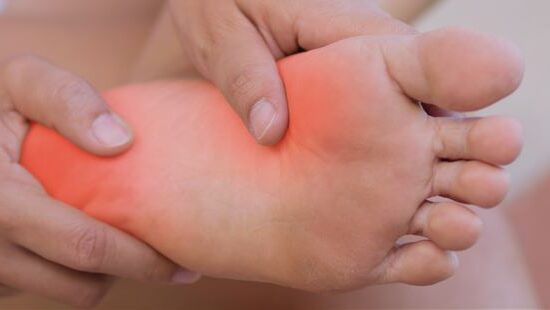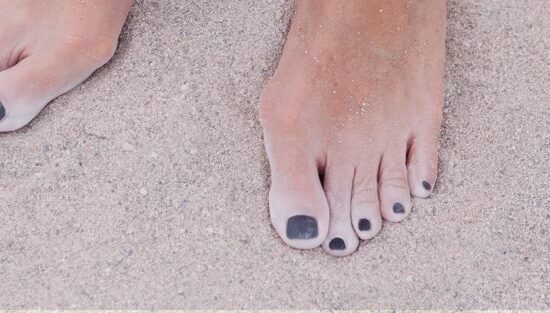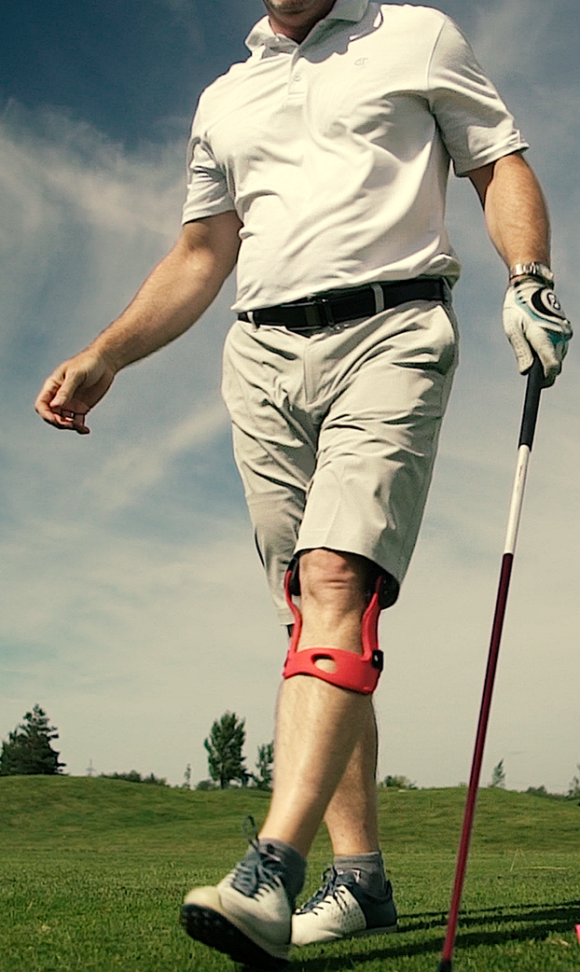A heel spur, also known as a calcaneal osteophyte, develops when the plantar fascia, the tendon supporting the underside of your foot, undergoes repeated microtrauma (running, excessive pronation, etc.). These micro-injuries trigger local inflammation, which the body responds to by depositing calcium to stabilize the affected area. Over time, this calcium builds up into a small, spike-like bony outgrowth, leading to pain in the heel.
What are the symptoms of a Heel Spur?
The first symptoms of a heel spur are sharp, localized pain in the heel, often described as a “hard spot” or crushing pressure when bearing weight. This discomfort is usually felt with the first steps in the morning or after a period of rest and tends to lessen slightly before reappearing later in the day. Other symptoms, like hypersensitivity or even a small bony prominence, may be felt upon palpation.
Chronic irritation over time can lead to persistent heel pain, which interferes with everyday and athletic activities such as walking or running. These symptoms may worsen with continued use or after long periods of standing or physical activity.
What differences between a heel spur and plantar fasciitis?
Plantar fasciitis is an inflammation of the plantar fascia and typically causes diffuse pain along the foot arch, which tends to improve with movement as the tissues warm up. Symptoms of plantar fasciitis often include aching or a dull, throbbing pain in the arch of the foot.
In contrast, a heel spur is a bony growth that forms where the fascia attaches to the heel bone (calcaneus), caused by chronic calcification from repeated microtrauma. Symptoms from a heel spur are highly localized and may include tingling or burning sensations. Simply stated, a heel spur is often a consequence of plantar fasciitis, which is why the symptoms can be quite similar.







